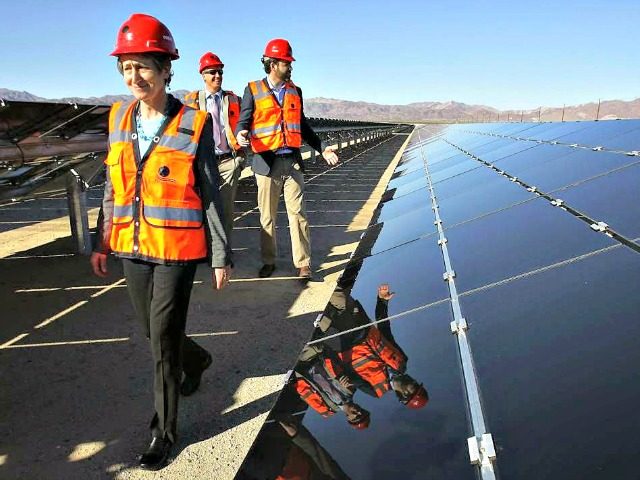California claims to be able to permanently replace fossil-fuel generated electricity with “intermittent” wind and solar generation, but the state’s electrical grid is on the verge of crisis as it may soon run out of the ability to import enough fossil-fuel electricity.
According to Gail Tverberg, who prophetically warned on January 6, 2008, in The Failure of Networked Systems that banks and insurance companies were about to cause a worldwide financial crisis, just warned that “Leaders around the world have demanded that their countries switch to renewable energy, without ever taking a very close look at what the costs and benefits were likely to be.”
With Gov. Brown signing Senate Bill 32 (SB 32), California committed to reducing greenhouse gas emissions from 20 percent below 1990 levels by 2017 to 40 percent below by 2030.
California’s 2015 Renewables Portfolio Standard (RPS) is now 2/3 wind and solar, and about 1/3 biomass geothermal and small hydro. The bulk of future RPS greenhouse reductions are expected to come almost exclusively from wind and solar.
Tverberg says this commitment to solar and wind has been justified by simple calculations of “Life Cycle Assessment” and “Energy Returned on Energy Invested.” But she argues, “These calculations miss the fact that the intermittent energy being returned is of very much lower quality than is needed to operate the electric grid.”
There are four parts to managing an electrical grid: 1) create a network by building connections between power sources; 2) when a particular part of the network approaches excess demand (goes red), recognize this is happening and use the grid connections to switch demand to another network power source; 3) continue doing this until all areas are red; 4) and then begin rationing demand through black-outs.
With California at 12.3 percent intermittent wind and solar electrical penetration in 2015, Tverberg points out that the state is suffering the same type of electric grid degradation that Hawaii is currently suffering with 12.2 percent solar and wind penetration.
Hawaii is an island chain that cannot import energy to their electrical grid. With $331 million invested in Hawaii during 2015, its installed solar capacity hit 615 megawatts, supposedly “enough solar energy installed in the state to power 159,000 homes.
But due to the intermittent challenge of needing an equal amount of standby electrical generation for periods of overcast or darkness, Hawaii has been forced to stop residential solar net metering (giving homeowners credit for the retail cost of electricity, when electricity is sold to the grid) and is phasing out these solar subsidies.
Tverberg highlights that the intermittent “situation is not too different in California.” Due to solar and wind subsidies that have driven electrical costs to 45 percent higher than the national average, over 1/3 of California’s electric grid power for non-intermittent (also called “dispatchable”) electrical back-up must now be imported from other states, up from only 25 percent in 2010.
California’s solar and wind electricity generation falls quickly in the summer as the sun is setting. This period of declining availability is almost exactly the same period that the demand for “dispatchable” electricity to power air conditioning spikes — between 5 and 9 p.m.
California claims to be reducing the “state’s greenhouse gas emissions,” but about 80 percent of California’s rapidly rising electrical imports come from fossil-fuel power plants, “six percent from coal-fired plants”, and up to 14 percent from nuclear.
With Gov. Brown’s RPS demanding rapid increases in solar and wind power generation, California’s electric grid is on a crash course to exceed its ability to import enough “excess” dispatchable power from other states.
Tverberg believes that, due to the requirement for non-intermittent “operating reserves” to allow the electric grid to maintain stability, there is an “apparent “lid” on intermittent electricity at 10 percent to 15 percent of total electricity consumption.”

COMMENTS
Please let us know if you're having issues with commenting.